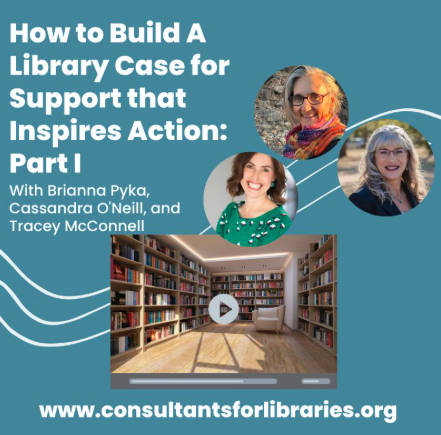5 Reasons Why Your Entire Library Board Needs to Give (No Matter the Amount)
- 5 mins
As a library director or development professional, you've likely heard the phrase "100% board participation" countless times in fundraising circles. But when it comes to libraries, this concept can feel especially challenging. Your board members may be passionate about literacy and community access, but they might also wonder if their personal giving truly matters when your library already receives tax funding or grants.
Here's the truth: only 59% of nonprofits saw all of their board members pledge or give a gift in the past year, yet the organizations that achieve 100% board participation consistently outperform those that don't. For libraries seeking to build sustainable fundraising programs, universal board giving isn't just helpful—it's essential. Here's why every single board member should contribute, regardless of the amount.
1. Board Giving Validates Your Library's Mission to External Funders
When you approach foundations, major donors, or corporate sponsors, one of the first questions they'll ask is about board participation. One hundred percent participation from the board is a testament to board members' commitment to the organization, and potential funders view this as a critical indicator of organizational health.
Think about it from a funder's perspective: if the people closest to your library—those who understand its impact intimately and guide its strategic direction—aren't willing to invest their own resources, why should an outside donor take that risk? Even if a board member can only contribute $25, that gift demonstrates belief in the library's mission and creates the credibility you need to secure larger donations.
92% of nonprofit organizations use board giving as a measure of fundraising, making this metric an industry standard that your library can't afford to ignore. When grant applications ask about board participation rates, you want to confidently answer "100%."
2. Personal Investment Creates Stronger Advocacy
Board members who give financially become more invested advocates for your library. This isn't about the dollar amount—it's about the psychological commitment that comes with making a personal investment. A board member who contributes $50 annually will speak about your library's funding needs with more passion and authority than one who hasn't made any financial contribution.
This enhanced advocacy translates into real fundraising results. Board members who give are more likely to:
- Make introductions to their personal networks
- Speak convincingly about the library's funding needs
- Volunteer for fundraising events and activities
- Share your library's impact stories authentically
Boards average 74 percent participation in giving; however, on the average only 46 percent of boards had a 100 percent participation rate. Libraries that achieve that full 100% gain a significant competitive advantage in their advocacy efforts.
3. It Establishes a Culture of Philanthropy Within Your Organization
When every board member gives, it creates a cultural shift that extends throughout your entire library system. Staff members see that their leadership team is personally invested, which often inspires them to contribute as well. Friends of the Library groups observe the board's commitment and feel more confident asking their networks for support.
This culture of giving becomes particularly powerful when you're launching capital campaigns or major initiatives. A unified board that has demonstrated financial commitment can speak with one voice about the importance of community support. The ripple effect of this cultural shift often results in increased giving from all stakeholder groups.
The amount doesn't matter nearly as much as the participation. A board member contributing $10 monthly sends the same cultural message as one giving $1,000 annually—that this library is worth personal investment.
4. Board Giving Provides Unrestricted Operating Support
While grants and government funding often come with restrictions, board donations typically provide the flexible funding your library needs most. These unrestricted gifts can support:
- Emergency equipment repairs
- Staff professional development
- Pilot programs before seeking larger grants
- Matching funds requirements for major gifts
- Year-end budget shortfalls
Board giving is typically 10% of total giving across nonprofit organizations. For libraries just beginning their fundraising journey, board contributions often represent the foundation upon which larger fundraising efforts are built. These initial gifts demonstrate sustainability to other potential donors and provide working capital for fundraising activities.
Even modest board contributions—$25-$100 per member—can create a meaningful unrestricted fund that gives your library operational flexibility that tax-based funding simply can't provide.
5. It Models Community Engagement for Your Patrons
Libraries exist to serve their communities, and board giving demonstrates that community members should financially support institutions they value. When your board members give, they're modeling the behavior you want to see from your broader patron base.
This modeling effect is particularly important for libraries because many community members assume that tax funding covers all library needs. When board members share that they contribute personally because they believe in expanding library services beyond what tax support allows, it educates the community about philanthropy's role in library excellence.
According to a recent BoardSource survey, 68 percent of nonprofit organizations have a policy requiring board members to make a personal contribution on an annual basis, and for boards that raise funds, the target should be to reach 100 percent board member participation. Libraries implementing similar policies find that their communities respond positively to this transparent commitment.
Making 100% Participation Achievable
The key to achieving universal board participation isn't setting high minimum amounts—it's making giving accessible and meaningful for every board member's situation. Some practical approaches include:
- Allow monthly giving options for smaller amounts
- Accept in-kind donations that can be valued appropriately
- Provide multiple giving categories without minimum requirements
- Make it clear that $25 annually counts as full participation
- Focus conversations on participation, not amounts
Remember, 60% of nonprofit organizations require board members to make gifts, but the most successful libraries make this expectation clear during board recruitment, not after someone joins.
Building Your Library's Sustainable Future
Achieving 100% board participation creates a foundation for all your future fundraising efforts. It demonstrates organizational health, builds advocacy capacity, establishes a culture of philanthropy, provides operational flexibility, and models community engagement. Most importantly, it positions your library to access the private philanthropic support that can transform your community impact.
The amount each board member contributes matters far less than ensuring everyone participates. A $20 annual gift from every board member sends a stronger message than sporadic large gifts from only half your board. Focus on participation first, and the gift amounts will grow naturally as your fundraising program matures and board members become more invested in your library's philanthropic success.
When every board member gives—regardless of amount—your library demonstrates the kind of unified commitment that attracts major donors, impresses grant makers, and builds the sustainable funding your community deserves.




